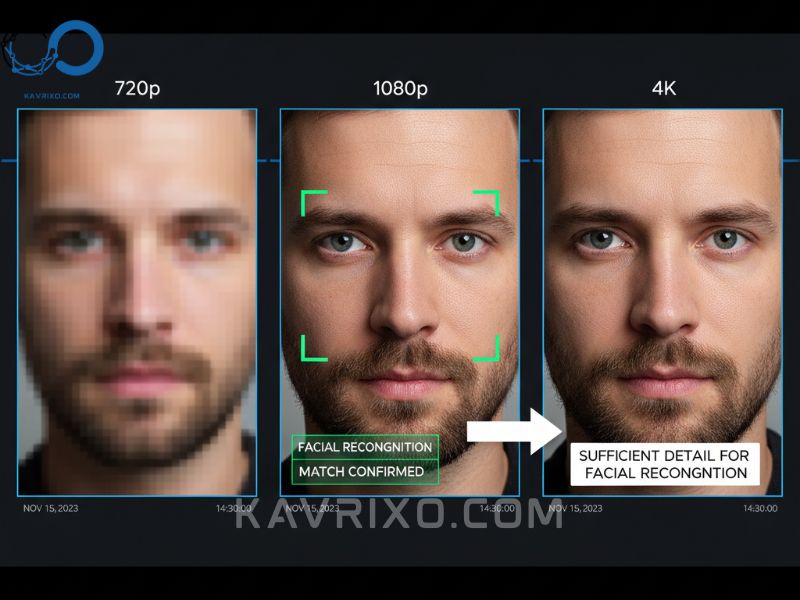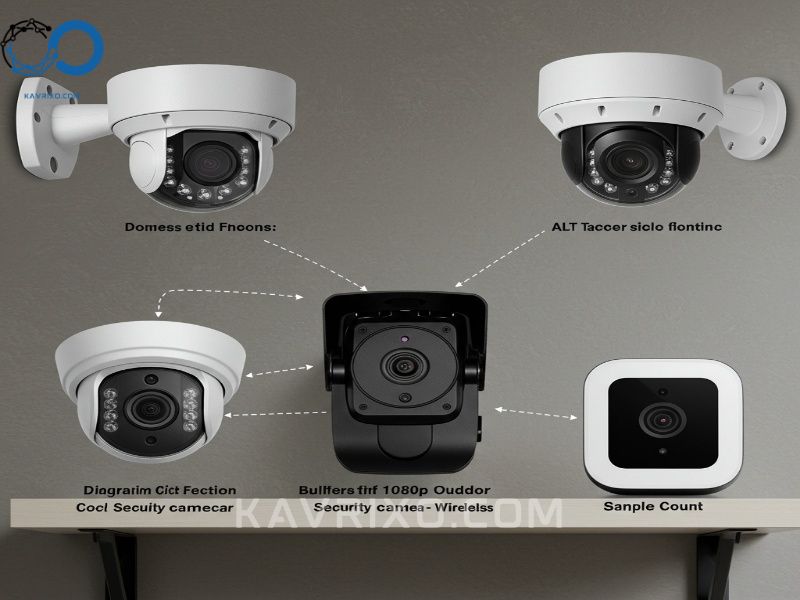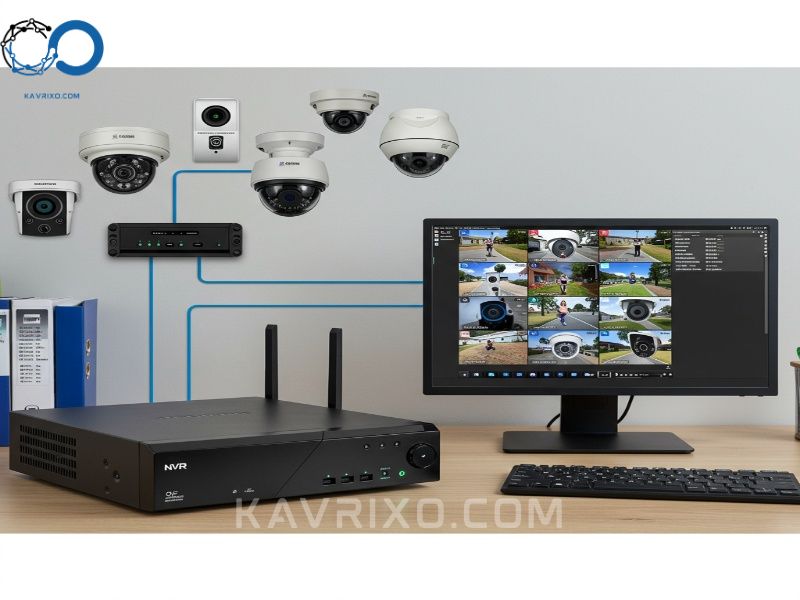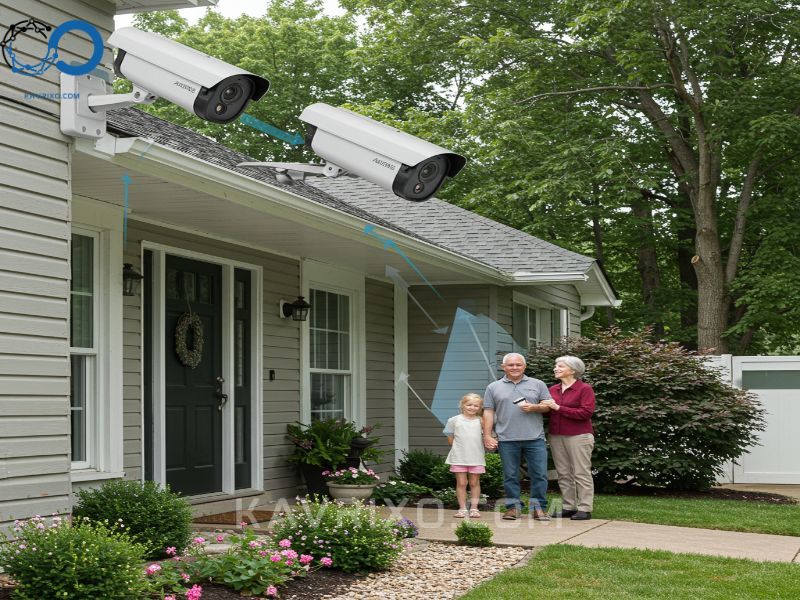In the rapidly evolving world of security technology, new resolutions and features emerge almost every month. Yet, one standard remains consistently relevant, reliable, and highly effective: 1080p, or Full HD. For homeowners and small businesses seeking dependable, high-quality video surveillance without the complexity or expense of cutting-edge 4K systems, the full hd security camera 1080p system is often the perfect balance of performance and value.
This comprehensive guide will delve into why 1080p cameras continue to dominate the security landscape, what features you need to prioritize, and how to successfully deploy your chosen 1080p security camera system for maximum coverage and peace of mind. We will explore everything from sensor technology and night vision capabilities to the practicalities of installation and storage management.
Contents
- 1 Understanding the Enduring Value of 1080p Resolution
- 2 Key Features to Look for in a 1080p Security Camera
- 3 Types of 1080p Video Surveillance Cameras and Their Applications
- 4 Installation and Ecosystem Considerations for 1080p Video Surveillance
- 5 Optimizing Performance: Ensuring Your 1080p CCTV Security Camera Delivers
- 6 Conclusion: The Longevity and Reliability of Full HD Security Camera 1080p Systems
Understanding the Enduring Value of 1080p Resolution
While 4K resolution (Ultra HD) offers stunning detail, it also brings significant challenges regarding bandwidth, storage capacity, and hardware cost. For the vast majority of surveillance applications—identifying faces, tracking vehicles, and monitoring entry points—the resolution provided by a 1080p video surveillance camera is more than sufficient, offering crucial detail without overwhelming your network infrastructure.
The Definition of Full HD: Why 1920×1080 Matters
Full High Definition (Full HD) refers to a video resolution of 1920 pixels horizontally by 1080 pixels vertically. This standard provides approximately 2.1 million pixels per frame. When compared to the older standard definition or even 720p resolution, this massive jump in pixel count translates directly into improved clarity, sharpness, and the ability to digitally zoom into footage without the image instantly dissolving into blurry blocks.
For a security application, clarity is non-negotiable. If an incident occurs, law enforcement requires clear evidence. A 1080p cctv camera ensures that critical details—such as license plates at a reasonable distance or facial features at a doorway—are rendered with enough precision to be useful in an investigation. This level of detail is the sweet spot that provides accountability without the data overload associated with higher resolutions.
Comparison: 1080p vs. 720p and 4K (The Sweet Spot)
To truly appreciate the enduring relevance of the full hd security camera 1080p, it helps to compare it against its peers:
- 720p (HD): At 1280×720 pixels (about 1 million pixels), 720p is often too low for effective facial identification beyond very close range. While inexpensive, it’s generally considered obsolete for primary surveillance recording.
- 1080p (Full HD): Providing over 2 million pixels, 1080p offers sharp, clear images that are perfect for general surveillance, playback on standard monitors, and efficient data storage. It is the gold standard for reliable, everyday security footage.
- 4K (Ultra HD): Offering 3840×2160 pixels (about 8 million pixels), 4K provides four times the detail of 1080p. While incredible for large areas, 4K cameras require significantly more processing power, specialized network video recorders (NVRs), and four times the storage space. This often leads to prohibitive costs and complex network configurations for the average user.
The 1080p security camera strikes a critical balance: it delivers evidential quality footage while remaining highly accessible, affordable, and easy to manage in terms of storage and bandwidth.

Read more: The Enduring Power of 1080p: Why the Camera 1080p Full HD Remains the Gold Standard for Versatility
Practical Clarity: What a 1080p CCTV Camera Captures
When evaluating surveillance quality, we often talk about “pixels per foot” (PPF). A quality 1080p cctv security camera, when properly positioned, can achieve excellent PPF for specific tasks:
- Identification (ID): At typical doorway distances (5-10 feet), 1080p provides enough detail to positively identify an individual.
- Recognition: At moderate distances (15-30 feet), you can clearly recognize a person or vehicle type.
- Monitoring: It provides excellent wide-area coverage for monitoring flow and activity across large rooms or yards.
Furthermore, most modern NVRs and recording software are perfectly optimized to handle continuous streams from multiple 1080p cameras, ensuring smooth, reliable recording 24/7.
Key Features to Look for in a 1080p Security Camera
Simply having 1080p resolution is only the starting point. The best performance comes from units that integrate high-quality sensors and smart features designed to optimize that resolution under various environmental conditions. When shopping for a new full hd security camera 1080p, these features are essential considerations.
Night Vision Technology (IR vs. Color Night Vision)
Security incidents rarely wait for daylight. Effective night vision is perhaps the most crucial feature after resolution.
Traditional Infrared (IR)
Most 1080p video surveillance cameras use integrated IR LEDs to illuminate the scene in low light. This produces clear black-and-white footage. Key specifications to check include the effective IR range (e.g., 60 feet, 100 feet). A camera with Smart IR technology is even better, as it adjusts the intensity of the IR light to prevent “washout”—where close-up objects become overexposed white blobs.
Color Night Vision (Starlight/Low-Light Sensors)
A growing number of advanced 1080p cameras utilize highly sensitive image sensors (often called Starlight sensors) combined with wide apertures. These cameras can capture and process ambient light (such as light from streetlamps or the moon) to produce full-color video even in near-dark conditions. Color night vision provides significantly more contextual information, making it easier to identify clothing color, car color, or other critical details often lost in standard black-and-white IR footage.

Field of View and Lens Type (Fixed vs. Varifocal)
The lens choice determines how much area your camera covers and how far away it can capture detail.
- Fixed Lens: The most common type for residential and small commercial installations. A fixed lens (e.g., 2.8mm, 4mm, or 6mm) has a permanent focal length. A 2.8mm lens provides a very wide field of view (often 100° to 110°), perfect for covering a wide yard or large room, but detail diminishes quickly at a distance. If you are using a 1080p wifi security camera to monitor a single entry point, a fixed lens is often the simplest and best choice.
- Varifocal Lens: These lenses allow the installer to adjust the focal length (e.g., 2.7mm to 13.5mm) after installation. This is invaluable for specialized tasks, allowing you to zoom in to focus on a specific bottleneck, like a gate or cash register, maximizing the detail captured by the full hd security camera 1080p within that specific viewing area.
Weatherproofing and Durability (IP Ratings)
If your surveillance system includes outdoor units, their resilience against the elements is paramount. Durability is rated using the International Protection (IP) code, typically IP66 or IP667.
- IP66: This rating signifies that the camera is completely protected against dust ingress (6) and powerful jets of water (6). This is suitable for most outdoor environments.
- IP67: This offers similar dust protection (6) but protects against temporary immersion in water (7), making it ideal for areas prone to heavy rain or flooding.
Always ensure your chosen 1080p cctv unit carries an appropriate IP rating if it will be exposed to the elements.
Types of 1080p Video Surveillance Cameras and Their Applications
The term 1080p security camera encompasses a wide variety of form factors and connectivity types, each suited for different monitoring scenarios. Choosing the right physical type and connection method is crucial for optimizing your system’s reliability and ease of use.
Wired Systems (PoE and Analog HD)
Wired systems are the backbone of professional and reliable security installations. They offer superior stability and eliminate concerns about battery life or Wi-Fi interference.
Power over Ethernet (PoE)
PoE IP cameras are the modern standard for wired 1080p video surveillance. They use a single Ethernet cable (Cat5e or Cat6) to transmit both power and data back to a central NVR (Network Video Recorder).
- Pros: Highly reliable, excellent data throughput, easy installation (only one cable needed), and scalable. A PoE full hd security camera 1080p system is the standard for commercial-grade deployments where stability is paramount.
- Cons: Requires running physical cabling, which can be difficult in existing structures.
Analog HD (HDCVI, HD-TVI, AHD)
These systems utilize traditional coaxial cable (like the ones used for older, non-HD CCTV) but transmit high-definition 1080p video. These systems are popular for upgrading older analog setups because they reuse existing coaxial wiring, saving significant installation time and cost.
Wireless Convenience: The Rise of the 1080p WiFi Security Camera
For many homeowners and renters, the thought of running network cables throughout the house is daunting. This is where the 1080p wifi security camera shines. These cameras transmit data wirelessly to a central hub or directly to the cloud/local storage.
- Battery-Powered Wireless: Ideal for hard-to-reach locations (like fence posts or sheds). These prioritize motion-activated recording to conserve battery life.
- Plug-in Wireless: Requires a power outlet but eliminates the need for data cabling. This is the most common form factor for indoor 1080p cameras.
While incredibly convenient, it is vital that the 1080p wifi security camera is installed within a strong, stable Wi-Fi signal range. Poor connectivity can result in dropped frames, latency, or complete recording failure—compromising the quality of your 1080p video surveillance.

Specialized Cameras (Domes, Bullets, PTZ)
The physical housing impacts where and how the camera should be used:
- Dome Cameras: Often used indoors or in areas where vandalism is a concern. Their dome shape makes it difficult for an observer to tell which direction the lens is pointing, adding an element of deterrence.
- Bullet Cameras: Highly visible, cylindrical cameras ideal for outdoor perimeter monitoring. Their housing usually offers superior weather resistance and allows for easy aiming.
- PTZ (Pan-Tilt-Zoom) Cameras: These advanced 1080p security camera systems can be remotely controlled to move horizontally (pan), vertically (tilt), and optically zoom in or out. They are excellent for covering extremely large areas where automated patrolling or manual tracking of incidents is necessary.
Installation and Ecosystem Considerations for 1080p Video Surveillance
The highest quality full hd security camera 1080p will only perform as well as the ecosystem supporting it. Effective surveillance requires careful planning regarding data storage, network capacity, and smart integration.
Storage Solutions (NVRs, DVRs, and Cloud Options)
Where does all that high-resolution data go?
Network Video Recorders (NVRs)
Used exclusively with IP cameras (PoE or Wi-Fi), NVRs are specialized computers designed to manage, record, and playback digital video streams. Because IP cameras process the video before sending it, NVRs typically offer superior performance and easier remote access. If you are building a system based on quality 1080p cameras, an NVR is generally the preferred option.
Digital Video Recorders (DVRs)
Used with Analog HD systems, DVRs take the raw analog video feed from the camera and digitize/compress it at the recorder unit. DVRs are simpler and often cheaper but rely on older technology.
Cloud Storage
Many 1080p wifi security camera models offer subscription-based cloud storage. This is excellent for redundancy—if the camera or recorder is stolen, the footage is safely stored off-site. However, relying solely on the cloud for continuous 1080p video surveillance requires significant and stable internet upload speed.

Bandwidth Requirements for 1080p Streams
One of the biggest advantages of sticking with 1080p over 4K is manageable bandwidth consumption. However, even a 1080p cctv security camera requires adequate network capacity, especially when accessing the feed remotely or relying on cloud backup.
A single, high-quality 1080p stream typically consumes between 2 Mbps and 6 Mbps, depending on the compression codec (H.264 vs. the more efficient H.265) and the frame rate. If you have four 1080p cameras recording simultaneously, that could easily require 8-24 Mbps of internal network bandwidth.
- Tip: When setting up your system, always verify that your router and switches can handle the total aggregated bandwidth of all your full hd security camera 1080p streams simultaneously, especially when streaming footage to a remote device.
Integration with Smart Home Platforms
Modern surveillance is rarely a standalone system. Many 1080p wifi security camera and IP systems integrate seamlessly with popular smart ecosystems (like Amazon Alexa or Google Home). This integration allows users to:
- View live footage instantly on a smart display with a voice command.
- Trigger other smart devices (like lights or alarms) based on motion detected by the 1080p security camera.
- Receive instant notifications directly on mobile devices.
This connectivity enhances the proactive security capability of your 1080p cctv system, turning it from a passive recorder into an active component of your automated home defense.
Optimizing Performance: Ensuring Your 1080p CCTV Security Camera Delivers
Once you have purchased your ideal full hd security camera 1080p system, optimization is key to realizing its full potential. Even the best hardware can produce useless footage if poorly configured or badly positioned.
Correct Placement for Maximum Coverage
Strategic placement is essential for maximizing the value of your 1080p cctv security camera.
- Avoid Backlighting: Never aim a camera directly into bright light (like the rising sun or a porch light) unless the camera has exceptional Wide Dynamic Range (WDR) capability. Backlighting silhouettes subjects, rendering them unrecognizable.
- Focus on Chokepoints: Prioritize recording areas where people must pass: front doors, back gates, garages, and driveways. A well-aimed 1080p security camera at these points is more valuable than two aimed at open fields.
- Mount High, but Accessible: Mount the camera high enough (8-10 feet) to prevent tampering, but not so high that you lose critical detail for identification. Aim slightly downward toward the main area of interest.

Compression and Frame Rate Settings
To manage storage efficiently while maintaining high quality, you need to understand compression (codec) and frame rate.
Compression (H.265)
Always favor cameras and recorders that support H.265 encoding over H.264. H.265 (High Efficiency Video Coding) can reduce the file size of a 1080p video surveillance stream by up to 50% compared to H.264, without a noticeable loss in visual quality. This is critical for maximizing hard drive capacity and minimizing bandwidth usage.
Frame Rate (FPS)
Frame rate (frames per second) dictates the smoothness of the motion captured.
- 24-30 FPS: Ideal for capturing smooth motion, crucial for tracking fast-moving vehicles or complex activities.
- 15 FPS: A good compromise for general surveillance, reducing storage needs while maintaining decent motion clarity.
- 5-7 FPS: Often used for secondary areas or very long-term archival recording, but motion can appear choppy.
For primary coverage areas monitored by a full hd security camera 1080p, aiming for at least 15 FPS is highly recommended to ensure no critical moments are missed.
Maintenance and Troubleshooting Common Issues
Even the most robust 1080p cctv system requires regular maintenance:
- Lens Cleaning: Outdoor cameras accumulate dirt, dust, and spider webs quickly. A smudged lens can drastically reduce the effective resolution of your 1080p video surveillance camera. Clean the lens housing regularly with a soft cloth.
- Cable Checks: For wired systems, ensure all connections are secure and weatherproofed. Cable degradation is a common cause of intermittent video loss or flickering.
- Firmware Updates: Always keep the camera and NVR/DVR firmware up-to-date. Updates often include security patches, bug fixes, and performance enhancements that can improve video processing efficiency and network stability.

Conclusion: The Longevity and Reliability of Full HD Security Camera 1080p Systems
While the market continues to push higher resolutions, the full hd security camera 1080p remains the strategic choice for reliable, high-performing, and economically efficient security monitoring. It provides the crucial level of detail necessary for identification and evidence collection, without the excessive infrastructure demands of 4K.
Whether you opt for a robust wired system leveraging PoE technology or the flexibility of a modern 1080p wifi security camera, choosing a quality sensor and optimizing your system settings will guarantee exceptional results. The 1080p standard is not merely a compromise; it is the optimal resolution that guarantees clarity, affordability, and longevity, making it the smart investment for securing your property today and for years to come.

Pingback: Deconstructing ADT Surveillance Camera Prices: A Comprehensive 2025 Cost Guide - Kavrixo Blog
Pingback: The Definitive Guide to Finding the Best Arlo Camera for Your Home Security - Kavrixo Blog
Pingback: The Ultimate Guide to Finding the Best Hidden Camera Clock for Discreet Home Security - Kavrixo Blog
Pingback: The Best HomeKit Camera for 2025: Integrating Security, Privacy, and Apple Ecosystem - Kavrixo Blog